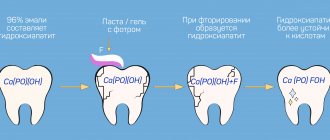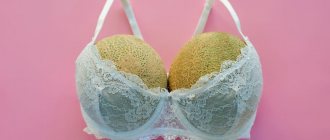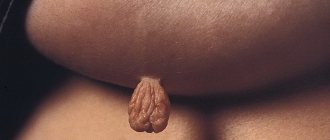Changes that begin in the body from the very first days may be noticeable initially, or may not be noticed until certain moments. So, when nipples dry out during pregnancy, women note not only a feeling of discomfort, but are also at a loss as to why this is happening right now, what does it mean, is it dangerous?
Causes
When the nipples become sensitive in the early stages during pregnancy, this indicates that a natural hormonal change is occurring, which affects literally all systems in the woman’s body. Powerful hormonal production in the first stages is aimed primarily at preserving the fetus and providing the necessary amount of placental elements.
The hormone progesterone irritates the skin, causing either an increased amount of oil production or drying it out. However, apart from stretching and increasing sensitivity, the nipples do not change in any way until a certain point. Already at 6 months, a woman may notice other characteristic changes that appear suddenly.
Prolactin comes into play, which ensures not only swelling of the mammary glands, but also the formation of colostrum inside the alveoli. The formation of a thick fluid is also due to a number of changes in the mammary gland itself, which continues to grow and increase in size.
Important!
Colostrum has a creamy tint; when a drop of colostrum forms on the nipple, you can rub it over the skin, it will initially be a little sticky, but then the thick consistency will be absorbed without leaving a trace. Colostrum leaves greasy dark stains on fabric that are difficult to wash off.
Reasons why nipples appear dry during pregnancy:
- Excessive amounts of the hormones progesterone and prolactin. Such a formation is not dangerous, but can cause dry skin; the nipple of the breast, with a large number of nerve receptors, reacts especially sharply.
- Poor hygiene, using soap that dries out the skin. Frequent water procedures using soap (especially antiseptic and antibacterial), gels without moisturizing oils provoke drying of the surface layer of skin on the nipple.
- Irritating secretion from Montgomery's tubercles. The secretion, which is secreted during pregnancy not only from the nipples, but also from the tubercles, is located in the halo area and provides antibacterial protection and lubrication. It prevents the addition of bacteria and helps eliminate possible risks when swimming in open water. However, when the hormonal composition changes, which occurs around the 7th month, there may also be a change in the composition of the secretion, which now dries out the tip of the nipple.
- Allergy to irritating components, food, vitamins. In some situations, other than the nipple drying out, there are no manifestations indicating an allergy. Therefore, it is quite difficult to determine an allergic reaction.
Another common cause of excessive dryness of the nipple is the appearance of colostrum, which is initially released in small quantities and dries on the nipple, forming a film. Then, after some time, the woman will notice its discharge during the daytime, now it is enough to leave stains on the bra or underwear.
Important!
If a discharge of a greenish, transparent hue with reddish impurities is released from the nipples, this is a reason to consult a doctor. Such discharge during or without pregnancy is a dangerous pathological condition.
Pregnancy period
Under no circumstances should you stimulate your nipples in any way. There is an opinion that if you rub your nipples with a hard towel or rough cloth, the skin will become rougher, and this will ease the unpleasant or painful sensations in the initial period after the birth of the baby, but this is a myth.
When the baby latches onto the breast correctly, painful sensations are practically reduced to zero, and those that persist disappear within about a week after the start of breastfeeding. Moreover, premature nipple stimulation can cause uterine hypertonicity and discomfort. There is also no need to try to express colostrum.
Breast care during pregnancy:
- Light contrast shower Without extreme temperature changes. It is better to alternate not cold and hot water, but cool and warm.
- Cosmetic oils and creams are best applied to damp skin. They will help maintain skin tone and reduce the risk of stretch marks (however, in the case of stretch marks, the effect has not been proven).
- Correct selection of underwear You need comfortable, maximally comfortable underwear, selected strictly according to size.
What to do
If, in addition to irritation and dry nipples, a woman is not bothered by other manifestations (pain, redness, red or green discharge), then all that can be done is to prevent the formation of cracks. Microcracks form in any case if the nipple constantly dries out. Therefore, to prevent painful treatment of a sore on the nipple, it is worth constant moisturizing.
If the gynecologist doubts the diagnosis, additional diagnostics may be prescribed in the form of ultrasound of the mammary glands and tests. There is no need to worry about this. Most likely, the doctor is playing it safe in order to exclude possible complications in the future. After all, pregnancy in this case acts as a risk factor in which the release of hormones occurs constantly, which means the risk of the formation of cysts and fibroids increases.
Important!
Oncology during pregnancy is diagnosed quite rarely, in only 3%. However, in all cases, this is preceded by precursors: increased temperature, discharge, retraction of the nipple inward.
Alarming symptoms
It is important to understand that discharge from the mammary glands during pregnancy is not always associated with changes in the body. There are a number of obvious indications and accompanying symptoms for which you need to immediately make an appointment with a specialist:
- aching or sharp pain in the chest area;
- discharge mixed with blood;
- presence of lumps in the mammary gland;
- fever and deterioration in health;
- the presence of green or dark discharge;
- discharge from only one breast.
The listed factors may indicate the presence of a disease that requires urgent treatment. Only a highly qualified specialist can accurately determine the cause after a personal examination and ordering tests.
Recommendations
Important recommendations from a therapist, obstetrician and gynecologist in most cases concern proper nutrition, enriched with vitamins and microelements, as well as a proper lifestyle. Women who smoke before pregnancy or during pregnancy risk complications such as dry nipples, allergies and irritations on the skin of the mammary glands. Nicotine dries out the skin, making it thinner and more susceptible to external factors.
Important!
It is worth undergoing an additional consultation with an endocrinologist to rule out diseases of the thyroid gland, pancreas and adrenal glands. These organs can affect pregnancy and the production of hormones, which causes a change in the qualitative composition of secretions from the breast in later stages .
Breast care before and during pregnancy
Before and during pregnancy, your breasts require special attention. The advice of oncologist-mammologist Maria Sergeevna Medical Chudinovskikh and our recommendations will help you maintain a beautiful bust and successfully feed your baby with breast milk.
Before pregnancy
First of all, dear expectant mothers, when planning a pregnancy, conduct a full breast examination in order to identify possible diseases (please note that many diagnostic and therapeutic procedures are dangerous to carry out during pregnancy). Be sure to visit a mammologist, undergo an ultrasound procedure, and you may need to have a mammogram (X-ray examination of the mammary glands) to examine your breasts. This procedure can be done only 2-3 months before conception.
Do not delay visiting a mammologist if you have:
- you have had repeated abortions or miscarriages, you took OCs for a long time, you had problems with breastfeeding after a previous pregnancy
- there are (or were) diseases of the thyroid gland, pathology of the pelvic organs (endometriosis, ovarian cysts, uterine fibroids), diseases of the mammary glands (fibroadenomas, cysts or mastopathy)
- The first pregnancy occurred after 30 years.
If you have even the smallest tumor, it can increase during pregnancy. Unremoved fibroadenoma can block the ducts of the mammary gland, as well as provoke mastitis and other diseases.
Now let's talk about the anxiety of expectant mothers that the breasts will lose their attractive appearance and will never look the same again. Do not panic, dear women, you will have time to prepare.
Most likely, you are already watching your weight, and this is very good for your bust. Striae (stretch marks) are less likely to appear during pregnancy and lactation if you do not have extra pounds. With normal body weight, the breast is approximately 25% adipose tissue and 75% glandular. If you are overweight, then there is more fat in your breasts. During pregnancy, the breasts prepare for lactation - under the influence of estrogens, the glandular tissue grows, but the “amount” of skin remains the same. Imagine what will happen to your breasts if next to the glandular tissue there is excess fat or even additional fat that you can “build up” during pregnancy! In addition, such a load stretches the ligaments that support the breasts, so after lactation they will sag.
Special creams containing elastin, silicone and vitamin E strengthen the skin of the chest, abdomen and thighs and increase its elasticity. Start using these creams before pregnancy, before your metabolism and hormone levels change - these are the most common causes of stretch marks.
Preparing nipples for feeding is a separate topic. Consult your mammologist if you have flat or inverted nipples. You may need to use a special feeding shield when feeding. During pregnancy
Firstly , we monitor the condition of our body. Regular aching pain in the chest, its uneven enlargement, the appearance of lumps and depressions, and even more so discharge from the nipples - all this is the basis for an immediate visit to a mammologist.
Don't worry if you feel your breasts itching: the glands are expanding in preparation for milk production, and the stretched skin may be itchy. In this case, use anti-stretch mark creams.
Quite often you can hear the recommendation to rub your nipples with a rough towel. In practice, its implementation quite often leads to irritation of the skin of the nipples and the formation of cracks even before feeding begins. In addition, this procedure stimulates the release of the hormone oxytocin, which causes uterine contractions. And if during breastfeeding this phenomenon allows the uterus to return to normal faster, then during pregnancy such contractions cannot be called useful. They increase the tone of the pregnant uterus and can provoke premature birth in late pregnancy.
Pouring the chest with cold water is only useful in combination with dousing the entire body - as an independent procedure it is meaningless. Numerous studies have not confirmed the opinion that dousing and hardening the breasts increase lactation.
Secondly, in the 3-4th month of pregnancy, buy a maternity bra one size larger than your usual one. And at the 6th month - another size larger. Buy underwear only in maternity stores or pharmacies. Here there is a guarantee that the underwear meets quality standards and has the necessary degree of support. If the breasts are not securely “fixed” during pregnancy, they may sag after childbirth. Do not buy one large bra “for growth” - the cups should fit tightly to the skin and support the breasts well. Wear special bras during the day and nighttime maternity bras or special tops for sleep.
Thirdly, from about 5-6 months of pregnancy, sign up for courses on preparing for childbirth and natural feeding.
Here they will tell you everything about lactation and how to overcome lactation crises and milk stagnation. Feeding is only partly instinctive - it also needs to be learned. And also – be able to teach this to your baby. Articles on the topic All about colposcopy. Diagnostics,... What is the thyroid gland?...
A little about women's rules of feminine hygiene Eat right during... How to increase immunity? Interview…
Changes in the body during pregnancy
When a woman becomes pregnant, her body undergoes significant changes. The load on the internal organs becomes more intense: blood circulation increases, the kidneys and liver begin to function faster. The body itself changes greatly: the hips become wider and the breasts seem larger. Over time, the abdomen also increases and subcutaneous fat is deposited on the sides. This is not dangerous, since all pregnant women have such manifestations. The majority of pregnant women notice that their nipples also change: they may darken, peel, and undergo various changes.
A woman needs her breasts to naturally feed her baby; the organ changes during the menstrual cycle. All women noted that before menstruation, the skin of the breast becomes sensitive.
Nipples change a lot during pregnancy. They can increase in size and change in shape and color. This is not a disease. Doctors tell all expectant mothers that peeling nipples are normal. But its appearance may be due to several reasons: pathological and natural. Since it is difficult to get rid of nipple changes, you need to be prepared for this in advance.










